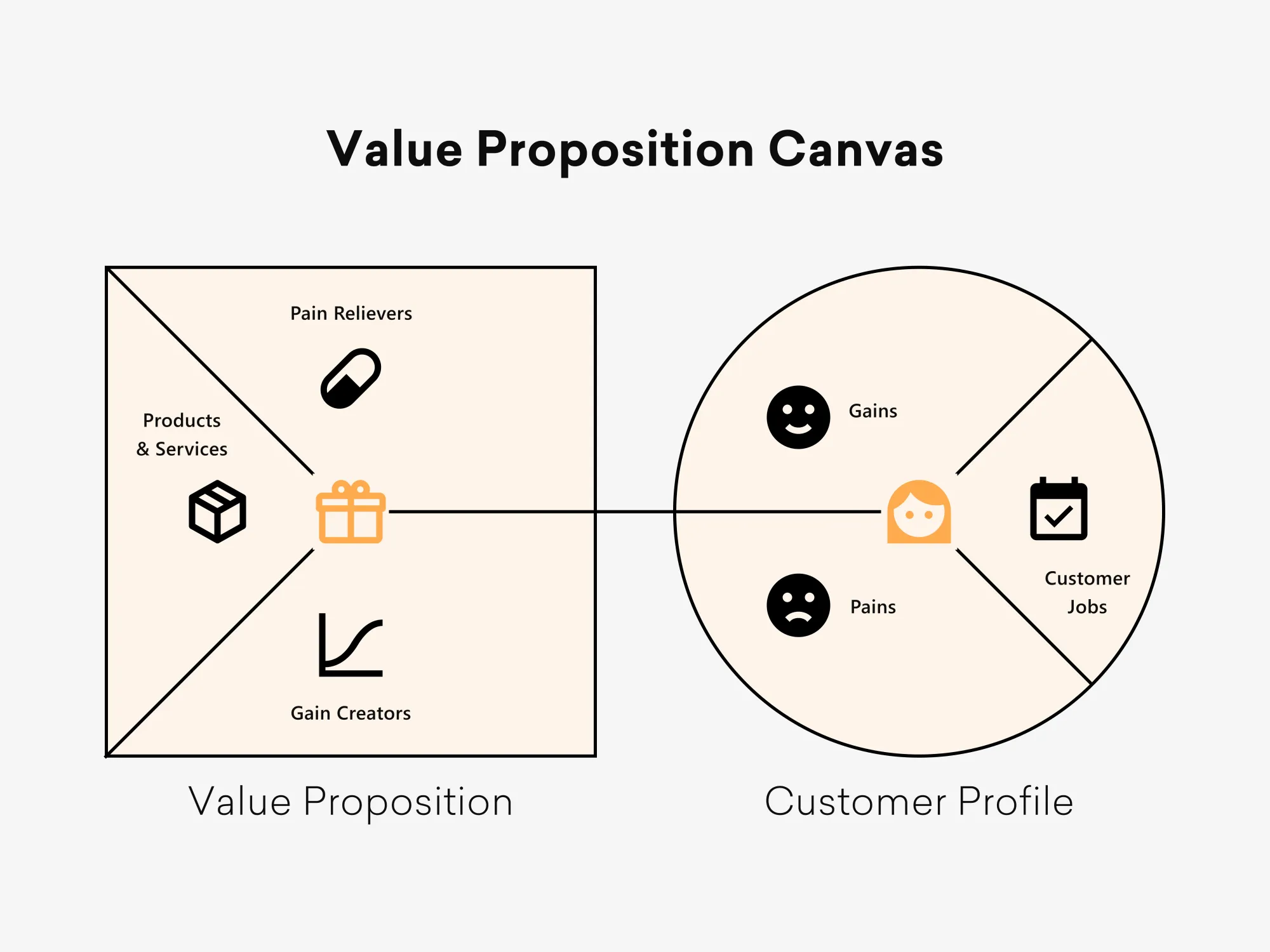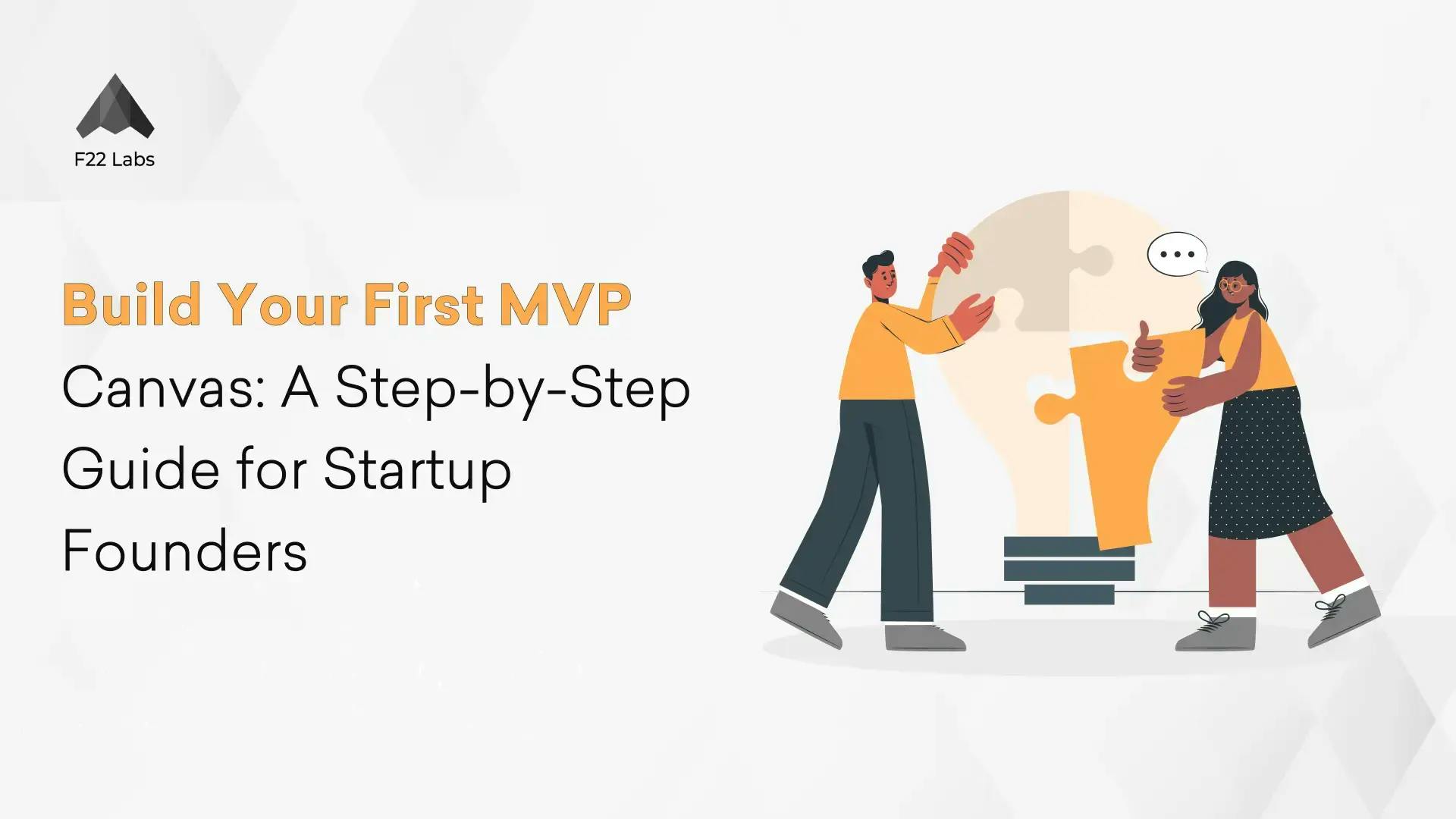Build Your First MVP Canvas: A Step-by-Step Guide for Startup Founders
Do you know that approximately 90% of startups fail? So what sets the remaining 10% apart?
Bill Gates once said, "The Internet is becoming the town square for the global village of tomorrow." Today's interconnected world demands unique, efficient solutions that strike a chord with your audience.
The difference between success and failure could be hinged on this. Enter the concept of the Minimum Viable Product (MVP), a strategy that lets you test the viability of your business idea in the real market environment without the need for full-scale development.
Defining MVP Canvas and Its Components
The MVP Canvas is a startup template that aids entrepreneurs in visualizing and planning the critical aspects of their Minimum Viable Product. Imagine you're about to launch an app for pet owners to find nearby dog walkers.
Your MVP Canvas will consist of key components like the value proposition, target customer segment, core features, and much more. This basic framework will guide your entire MVP development process.
Key components of the MVP Canvas
Before diving into the components, it's crucial to understand why an MVP is more than just a half-finished product. It's the embodiment of your startup's vision distilled down to its most essential elements.
Now, let's explore the key components:

Value Proposition
The value proposition is the heart of your product. It's what makes your product unique and compels your target audience to choose you over competitors. When you build your MVP, consider what problems you are solving and how your solution is better or different.
For instance, if your product offers eco-friendly packaging, that's a value proposition that appeals to environmentally-conscious consumers.
Target Customer Segment
Identifying the target customer segment is like setting the GPS for your business. An app designed for busy professionals will have different functionalities compared to one targeting college students.
Understanding for whom you build your MVP helps you tailor features, messaging, and branding.
Core Features and Functionality
In the process of building your MVP, the focus on core features and functionality is paramount. These are the absolute must-haves, the elements that define your product. In the realm of MVP in software development, it's about stripping down to the essentials that deliver the core value.
User Journey and Experience
The user journey and experience are the soul of your product. Partnering with an MVP development company or MVP development agency can help you map out the user's path through your product, ensuring it's intuitive, engaging, and fulfilling.
Imagine walking in your users' shoes and experiencing the product as they would.
Key Metrics for Success
Metrics are the compass guiding your product toward success. Whether you are working with an MVP software development company or one of the various mvp development agencies, understanding and monitoring these key metrics will help you measure how well your MVP resonates with your audience.
Building your MVP is like laying the foundation of a skyscraper. The stronger and more well-planned it is, the higher you can build. By understanding and meticulously planning the key components of your MVP, you're not just creating a product but aligning it with the very soul of your target audience.
Step-by-Step Guide to Building Your MVP Canvas
Consider this: would you venture on a cross-country journey without a map or a GPS? Probably not.
Similarly, before you set out to build your MVP, you need a plan. An MVP Canvas can serve as this roadmap. It's the master plan that ensures your product adds value to your target customers, operates smoothly, and sets the groundwork for a successful launch.
So, let's jump right into it and start to build your MVP step by step.
Step 1: Clearly define your value proposition
Why should anyone care about your product?

What problems are you solving, and what benefits are you offering?
Your value proposition answers these questions and more. It distinguishes your product from the competition, illustrating why customers should choose you. Consider what unique value you offer, what pain points you address, and why customers should trust you.
Only 22% of businesses are satisfied with their conversion rates. A well-defined value proposition can be the key to boosting these rates, by clearly communicating the unique value your product offers to the right audience.
Step 2: Identifying and understanding your target customer segment
The next critical step is to identify your ideal user, the one who stands to gain the most from your product. This group forms your target customer segment. For example, if your product is an app designed to simplify the task of finding tutors for kids, your target customer segment could be parents with school-going children.
Gaining a thorough understanding of this segment empowers you to mold your product to cater to their specific needs better.
At F22 Labs, we have extensive experience in helping startups precisely define and understand their target customer segments. Our expertise in market analysis and user behavior insights can provide you with a deep understanding of your potential users, helping you build your MVP that resonates with them.
Step 3: Outlining the core features and functionality
Here's where things get technical. When dealing with MVP in software development, you'll need to outline the core features and functionality of your product.
Here's a simple table to guide you:
Remember, the goal isn't to get in as many features as possible but to focus on the essentials that deliver the core value.
Step 4: Mapping out the user journey and experience
User experience is a pivotal aspect of any product. By working with an MVP development company or agency, you can map out the user journey to ensure your product is user-friendly and intuitive.
Follow these steps to map out your user journey:
- Start by identifying your user's goals.
- Outline the steps users need to take to achieve their goals.
- Identify potential pain points along the journey.
- Develop solutions to address these pain points.
Step 5: Establishing key metrics for measuring success
Lastly, you need a way to measure your success. What metrics will you use to gauge the effectiveness of your MVP? These might include user engagement, customer satisfaction, or revenue generated.
If you partner with an MVP software development company like F22 Labs or one of the many mvp development agencies, they can guide you in establishing and tracking these metrics.
Companies that measure customer satisfaction are 33% more likely to describe themselves as successful than those who don’t.
Tips for Validating Your MVP Canvas
After you've put in the hard work to build your MVP, it's time for the next crucial step - validation. Think of this stage as a reality check. It's where you learn if your assumptions about your value proposition, target customer segment, and other key aspects of your MVP Canvas hold water.
Validating your MVP can save you from investing further in a product that won't resonate with your audience. Let's explore some effective strategies for validating your MVP.
Conducting user interviews and feedback sessions
User feedback is like gold dust when you're validating your MVP. It provides invaluable insights into how your product is perceived and used. Consider a company like Slack; before becoming the popular team collaboration software we know today, it was a gaming company called Tiny Speck.
However, Tiny Speck's game didn't gain traction. Still, they noticed their internal tool for team communication was highly appreciated, leading to the pivot towards building Slack. They recognized the value of user feedback, which turned out to be a game-changer.
A/B Testing & Other Validation Techniques
A/B testing is another effective way to validate your MVP. With A/B testing, you can compare two versions of a webpage or other user experience to see which performs better. For instance, you could test two different landing pages for your product and see which one converts better.
Here's a quick comparison of A/B testing and other validation techniques:
Each method provides a different perspective, helping you make your product as compelling as possible.
Making data-driven decisions and iterating based on results
Finally, when it comes to validating your MVP, data is king. Whether you're working with an MVP development company, an MVP development agency, or an MVP software development company, making data-driven decisions will help you build a product that truly resonates with your audience.
Here's a simple process for making data-driven decisions:
- Start by defining your key metrics. This could include metrics like conversion rate, user engagement, and churn rate.
- Next, measure these metrics using tools like Google Analytics or other data tracking tools.
- Analyze your data to gain insights into how your product is performing and where improvements can be made.
- Based on your analysis, make necessary adjustments to your product.
- Finally, measure the impact of these changes and continue to iterate based on results.
By following these tips, you'll be able to validate your MVP effectively. Remember, the ultimate goal is to build your MVP in a way that fulfills the needs of your target audience. And to do that, validating your assumptions is key. Good luck!
Common Mistakes to Avoid When Creating an MVP Canvas
The journey to build your MVP is similar to a rollercoaster ride, one with its share of highs and lows. While certain hurdles along the way might offer valuable lessons, it's wise to sidestep some common mistakes that can drain your resources, and time, and potentially, jeopardize the success of your product.
Let's illuminate these typical errors and discuss how you can avoid falling into these traps.
Final Thoughts
Building a successful MVP takes more than just an idea; it's a carefully crafted process. That's what makes it special.
You're not merely creating something; you're shaping a solution that speaks to people. That said, it can be a challenging process, especially if you're doing it for the first time.
Feeling a bit overwhelmed?
Don't! You're not alone on this path to build your MVP. Team up with an MVP software development company like F22 Labs, and you'll find the expertise and guidance you need.
Think of it this way: even the longest journey starts with a single step, and we're with you, guiding you through the maze of MVP in software development. It's not just about creating; it's about crafting success.
So, what are you waiting for?
Build your MVP today with a free 1-hour consultation from F22 Labs. and become part of the 10% that succeed in the thrilling world of startups!
Author Detail
Murtuza Kutub
A product development and growth expert, helping founders and startups build and grow their products at lightning speed with a track record of success. Apart from work, I love to network & Travel.
Let's work together
Next for you
The Role of AI in Software Testing
Quality Assurance Testing
AI in software testing can be used to improve and expedite the testing procedure. Testing with the help of AI assesses a software's functionality, effectiveness, and dependability by automating data validation, error detectio...
The Fusion of AI and Automation Testing: Revolutionizing QA
Quality Assurance Testing
In the field of physics, fusion is a process where the smallest components of atoms are forced to join together, creating a new atom and releasing an immense amount of energy. Similarly, we are combining AI (the new cool gu...
Boost Site Engagement with Dynamic Open Graph Images in Next.js
Technology
In today’s digital landscape, Open Graph (OG) images play a crucial role in enhancing the visibility and appeal of your web content when shared on social media. This blog explores the implementation of dynamic OG images using...
